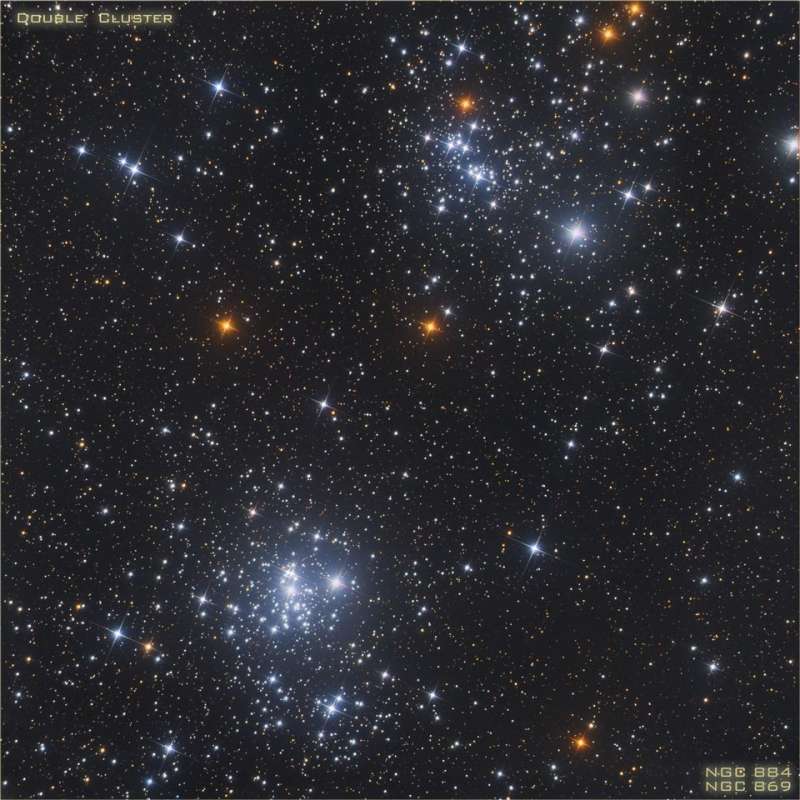 |
Астронет: Астрономическая картинка дня Двойное звездное скопление http://www.variable-stars.ru/db/msg/1276110/eng |
Credit & Copyright: F. Antonucci, M. Angelini, & F. Tagliani,
ADARA Astrobrallo
Explanation:
Few star clusters are seen to be so close to each other.
Some 7,000 light-years away, though, this pair of open or galactic
star clusters is an easy
binocular target, a
lovely starfield in the
northern constellation
Perseus.
Also visible to
the unaided eye from dark sky areas,
it was cataloged in 130 BC by Greek astronomer Hipparchus.
Now known as
h and
chi Persei, or
NGC 869 (above right) and NGC
884, the clusters themselves are separated by only a few hundred light-years
and contain stars much younger and hotter than the Sun.
In addition to being physically close together,
the clusters' ages
based on
their individual stars are similar - evidence that both
clusters were likely a product of the same
star-forming region.
APOD Editors to Speak:
RJN in Philadelphia on Jan.
3 &
JTB in New York City on Jan. 4
Authors & editors:
Robert Nemiroff
(MTU) &
Jerry Bonnell
(USRA)
NASA Web Site Statements, Warnings,
and Disclaimers
NASA Official: Jay Norris.
Specific
rights apply.
A service of:
LHEA at
NASA /
GSFC
& Michigan Tech. U.
